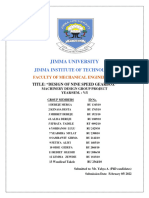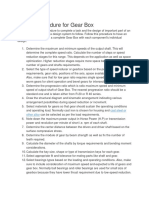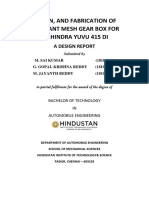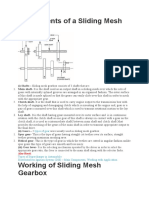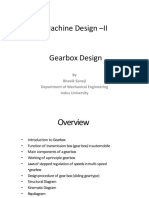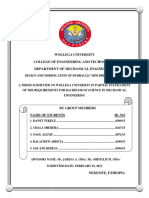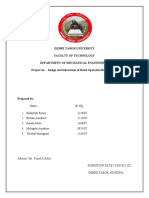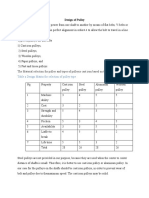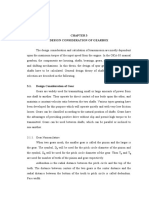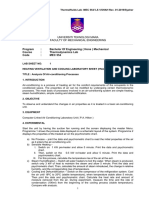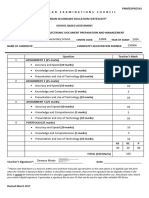100% found this document useful (2 votes)
676 views5 pagesMachine Design Project II
The document discusses the design of a gear box for a mechanical engineering project. It provides specifications for the project, which involves designing a double stage gear box with a 12.5 total gear ratio to transfer power from an electric motor to a simple grinding machine. It also provides guidelines for choosing the type of gear drive based on the velocity ratio and peripheral speed. Key factors discussed include gear selection and geometry, shaft and bearing selection, housing design, and lubrication system.
Uploaded by
Yigremachew bizualew AyenewCopyright
© © All Rights Reserved
We take content rights seriously. If you suspect this is your content, claim it here.
Available Formats
Download as DOCX, PDF, TXT or read online on Scribd
100% found this document useful (2 votes)
676 views5 pagesMachine Design Project II
The document discusses the design of a gear box for a mechanical engineering project. It provides specifications for the project, which involves designing a double stage gear box with a 12.5 total gear ratio to transfer power from an electric motor to a simple grinding machine. It also provides guidelines for choosing the type of gear drive based on the velocity ratio and peripheral speed. Key factors discussed include gear selection and geometry, shaft and bearing selection, housing design, and lubrication system.
Uploaded by
Yigremachew bizualew AyenewCopyright
© © All Rights Reserved
We take content rights seriously. If you suspect this is your content, claim it here.
Available Formats
Download as DOCX, PDF, TXT or read online on Scribd
/ 5









